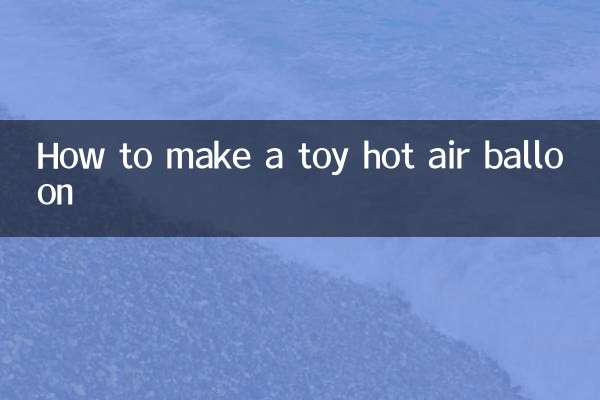How to fine-tune the remote control aircraft
Fine-tuning of remote-controlled aircraft is a key step in ensuring flight stability and handling accuracy. Whether it is a novice or a veteran player, mastering fine-tuning skills can significantly improve the flight experience. This article will combine popular topics and hot contents across the network for the past 10 days to analyze the fine-tuning methods of remote-controlled aircraft in detail and provide structured data for reference.
1. The basic principle of fine-tuning of remote-controlled aircraft

Trim refers to the slight adjustment of the rudder surface of the aircraft (such as ailerons, elevators, rudders) through the fine-tuning buttons or knobs on the remote control to offset the flight attitude deviation caused by center of gravity offset, wind interference or mechanical errors. The purpose of fine-tuning is to keep the aircraft flying in a straight line without control input.
2. Specific steps for fine-tuning
1.Horizontal fine adjustment (aileron fine adjustment): If the aircraft tilts to the left or right, it needs to be adjusted through the aileron fine-tuning button. For example, when the aircraft tilts to the left, fine-tune the aileron to the right.
2.Pitch fine adjustment (elevator fine adjustment): If the aircraft raises its head or lowers its head, the elevator needs to be adjusted fine-tuned. For example, when the aircraft continues to lift its head, fine-tune the elevator downward.
3.Direction fine-tuning (rudder fine-tuning): If the aircraft yaw (left and right offset), the rudder needs to be adjusted and fine-tuned. For example, when the aircraft yaw to the left, fine-tune the rudder to the right.
3. Summary of the fine-tuning problems of popular remote-controlled aircraft across the network
| question | Solution | Popularity index |
|---|---|---|
| The plane is still unstable after fine-tuning | Check whether the center of gravity is balanced or whether the mechanical structure is loose | 85% |
| Fine-tuning button is invalid | Confirm that the remote control and receiver are correctly matched | 72% |
| Too large amplitude of fine-tuning | Gradually adjust slightly to avoid over-correction | 68% |
4. Precautions for fine adjustment
1.Environmental factors: When the wind is strong, the fine-tuning effect may not be significant. It is recommended to perform it in windless or breeze conditions.
2.Gradually adjust: The amplitude of each fine adjustment should not be too large, and it is recommended to use 1-2 scales as units.
3.Record data: For fixed aircraft models, fine-tuning values can be recorded to facilitate quick settings during the next flight.
5. Advanced skills: Use digital trim
Some high-end remote controls support digital fine-tuning function, and can directly enter numerical values through the screen, with higher accuracy. Here is a comparison of digital tweaks and analog tweaks:
| type | Accuracy | Applicable scenarios |
|---|---|---|
| Simulation fine tune | medium | Entry-level remote control |
| Digital fine adjustment | high | Competition or professional flight |
6. Answers to common remote control aircraft fine-tuning questions
1.Q: After fine-tuning, the plane still tilts to one side?
A: It may be a center of gravity offset or a mechanical failure on the rudder surface, and the fuselage balance needs to be checked.
2.Q: Does fine-tuning require adjustments every time you fly?
A: If the aircraft structure has not changed and the environment is stable, there is usually no need for repeated adjustments.
7. Summary
Fine-tuning of remote-controlled aircraft is a necessary step before flight. By reasonably adjusting the aileron, elevator and rudder, flight stability can be significantly improved. This article combines popular topics across the network to provide you with structured data and practical skills. I hope it will be helpful to your flight experience!

check the details

check the details